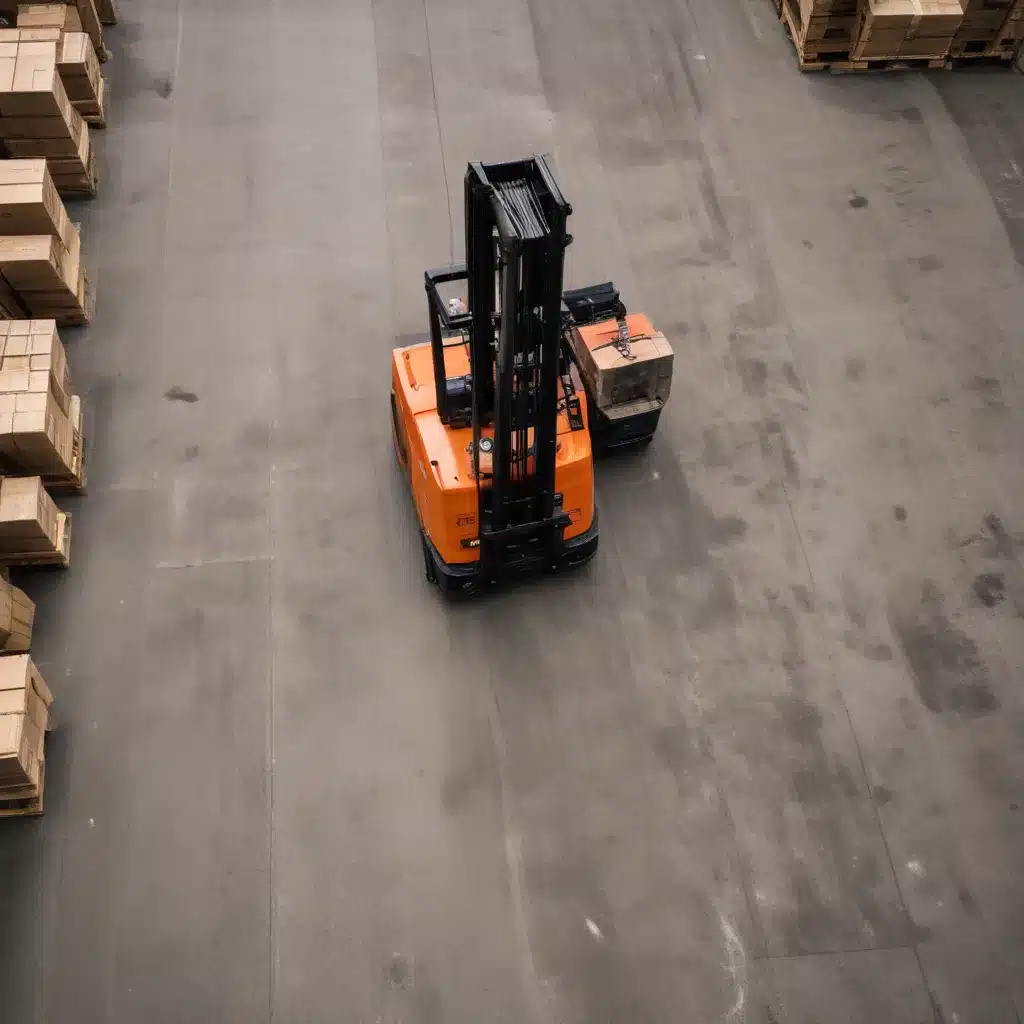
Revolutionizing Forklift Operations with Cutting-Edge Technologies
In the fast-paced world of logistics and warehousing, the humble forklift has long been the backbone of efficient material handling. However, as technology continues to reshape industry landscapes, the role of the forklift is undergoing a remarkable transformation. By harnessing the power of the Internet of Things (IoT) and Artificial Intelligence (AI), fleet managers can unlock unprecedented levels of optimization, driving down costs, enhancing safety, and boosting overall productivity.
Unlocking the Full Potential of Telematics
At the heart of this technological revolution lies the power of telematics – the integration of telecommunications and vehicle data to provide real-time information about fleet operations. While many fleet managers have already embraced telematics for basic functions like GPS tracking and fuel efficiency monitoring, the true potential of this technology extends far beyond these fundamental capabilities.
“Telematics is not just a fleet management tool; it’s a data-driven solution that can serve broader business objectives,” explains Powerfleet’s Chief Digital Officer, Ogi Redzic. “It’s critical to align telematics capabilities with overall business goals, whether that’s improving customer service, cutting operational costs, or supporting sustainability initiatives.”
By integrating telematics data with advanced analytics and AI-powered algorithms, fleet managers can unlock a wealth of insights that drive strategic decision-making. From predictive maintenance to optimized routing and driver behavior monitoring, the modern forklift is transforming into an intelligent, data-driven asset.
Predictive Maintenance: Preventing Costly Downtime
One of the most significant challenges in fleet management is managing vehicle downtime. Traditional preventive maintenance schedules are often based on assumptions and generalized estimates, leading to either over-maintenance or unexpected breakdowns. Telematics, however, can change this paradigm.
“Telematics, when integrated with advanced diagnostics systems, provides real-time data on vehicle performance, including engine health, brake wear, tire pressure, and other critical components,” says Caterpillar’s Chief Technology Officer, Otto Breitschwerdt. “Through predictive analytics, telematics can forecast maintenance needs based on actual vehicle use and performance data, minimizing unexpected breakdowns and reducing the overall cost of repairs.”
By transitioning from a reactive to a proactive maintenance strategy, fleet managers can extend the lifespan of their forklifts, reduce capital expenditures, and ensure that critical assets are always available when needed.
Improving Driver Safety and Reducing Risk
Forklift operations inherently carry safety risks, and traditional fleet management practices have often struggled to address this challenge effectively. However, the integration of telematics and AI is revolutionizing the way fleet managers approach driver behavior and accident prevention.
“Advanced telematics systems provide real-time alerts and detailed reports on driver performance, enabling fleet managers to identify risky behavior patterns,” explains VIA Technologies’ product manager, Alex Chen. “Moreover, integrating telematics data with advanced algorithms can help businesses predict accident risks and improve driver safety programs.”
By continuously monitoring factors like harsh braking, rapid acceleration, and excessive speeding, fleet managers can swiftly identify and address problematic driving habits. This not only reduces the risk of accidents but also lowers insurance costs and strengthens the company’s reputation for responsible fleet management.
Dynamic Routing and Fuel Optimization
Traditional route planning often overlooks critical variables such as real-time traffic conditions, weather disruptions, and the actual status of assets. Telematics, however, empowers fleet managers to move beyond static routing and employ dynamic optimization strategies.
“Real-time data allows dispatchers to adjust routes based on current conditions, ensuring faster deliveries, improved fuel efficiency, and reduced wear on vehicles,” says AVL’s fleet management expert, Sarah Al-Zahrani. “Telematics systems can also be integrated with external data sources like traffic information and weather reports, ensuring that fleets always take the most efficient routes.”
By harnessing the power of telematics, fleet managers can also gain unprecedented control over fuel consumption. Real-time monitoring of fuel usage, combined with predictive analytics, can help identify inefficiencies and optimize purchasing decisions to reduce overall fuel costs.
Integrating Telematics with Enterprise Systems
While the potential of telematics is immense, many companies struggle to fully leverage this technology. The key lies in seamlessly integrating telematics data with broader enterprise systems, allowing for a comprehensive, data-driven approach to fleet management.
“Telematics generates vast amounts of data, but data alone is not valuable without the right analytical tools,” cautions Powerfleet’s Redzic. “Companies must integrate telematics data with existing enterprise resource planning (ERP) systems, customer relationship management (CRM) platforms, and advanced analytics tools to gain comprehensive insights into their operations.”
By bridging the gap between telematics and other critical business systems, fleet managers can unlock a wealth of opportunities, from predictive maintenance scheduling to optimized inventory management and customer service enhancements.
Harnessing the Power of AI and Machine Learning
As telematics technology continues to evolve, the integration of Artificial Intelligence (AI) and Machine Learning (ML) is poised to take fleet management to new heights. These advanced technologies are becoming increasingly embedded within telematics platforms, offering predictive insights, automated processes, and enhanced decision-making.
“AI can analyze vast datasets collected by telematics systems to predict vehicle breakdowns, optimize fuel usage, and even recommend driver coaching based on behavior patterns,” explains Caterpillar’s Chief Information Officer, Jamie Engstrom. “The future of telematics lies in the seamless integration of AI and ML, driving unprecedented levels of automation and optimization.”
By embracing the power of AI-driven telematics, fleet managers can streamline operations, boost productivity, and stay ahead of the curve in an increasingly competitive industry.
Transforming the Future of Forklift Operations
The intelligent forklift, powered by the convergence of IoT and AI, is set to redefine the landscape of logistics and warehousing. By harnessing the full potential of telematics, fleet managers can unlock a wealth of operational efficiencies, enhance safety, and drive sustainable growth.
As the Forklift Reviews blog, we are excited to witness the transformative impact of these cutting-edge technologies on the forklift industry. By staying ahead of the curve and embracing the intelligent forklift, businesses can position themselves for long-term success in an increasingly dynamic and competitive landscape.

